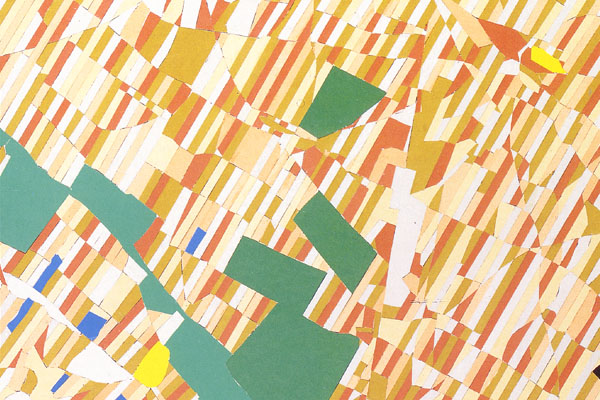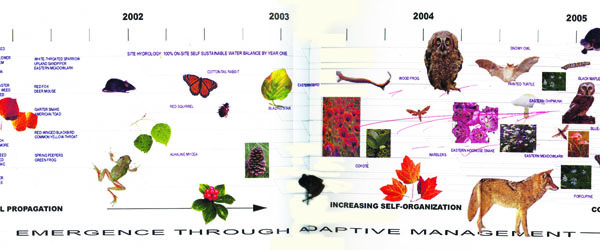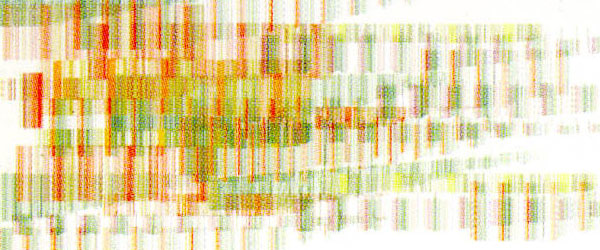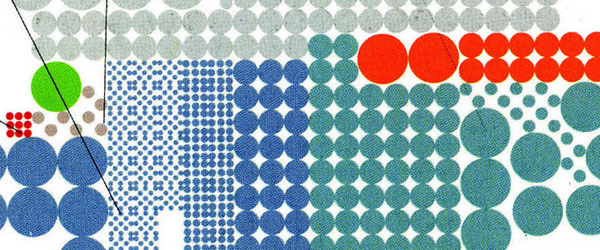Adriaan Geuze of West 8 Illustration
This week’s Architectural Animal continues our discussion of how to design WITH the animal by looking at comparative methods of representing ecology.
Representing Terra fluxus
Collected Methods of Response
Just as Derrida illuminates the significant difference between the definite (the) and indefinite (an or a) particles when preceding “animal” the methods through which one speaks and depicts landscape can become a significant issue for landscape urbanism. Terra Fluxus, the constantly moving and morphing plane of intensities, proves to be a very difficult entity to hear and respond to, or I should say represent with current architectural tools. The challenge is to show time sensitive relationships within the environment that, by depicting them does not limit their individual sets of unique characteristics. The catch appears to be to represent according to the indefinite particle.
James Corner, Field Operations, Downsview Park Time-Based Ecological Mangament Diagram
I’ve always been impressed with Corner’s tree diagram of stepped species in his proposal for the Downsview park competition. Rather than representing the park in a final stage of growth and development, Corner shows how an ecology of species might grow over the course of several years to inhabit the park. Much like the way a food-web diagram shows earlier and more primary species (grasses, insects and fungus) on the left side and the more mature and tertiary species of life (Foxes, Owls and Eagles) on the right. The strength of a such a diagram rests on a depiction of temporal relationships. It also rests on a certain degree of malleability. Though not shown, it would not be hard to imagine separate and distinct outcomes to the park if one of the species on the map never showed up. Similar to the flexibility found in the species diagram are Corner’s synoptic site plans of the park. Instead of one finalized plan we get a series of suggested stages of development in the park. It is understood through these drawings that different species will grow and mature at different rates from others and that the park as a whole will move through time.
In general though, what is potentially lacking in these two sets of drawings is that they remain relatively isolated from each other. While it is suggested in the layout of the presentation, that the biological life forms move in tandem with the ecological forms, the mutual impacts of each upon each other is left unexplored. A large population of bacteria and insects would have quite a different physical impact on the landscape than a comparably disproportionate population of owls or foxes. So where does this second set of relationships lie? Though Corner has made huge steps in depicting the strategic use of plants and animals over time the inter-relationships between the two is really where I believe Derrida and Haraway would like for us to focus. Because, again and again, (and I need to keep reminding myself as well), we are not talking about a series of entities moving on a smooth or non-biased plane. We are talking about a thick web of players and inter-connections. The challenge is to attempt to keep all of the players in mind and moving simultaneously in Donna Haraway’s poly-species symphony.
Bernard Tschumi, Downsview Park patterning illustration
Webs, Zones and Patterns
As Hight has been correct to point out, methods of representing the characteristics of impermanence, movability and multiplicity, becomes the primary challenge of landscape urbanists. Towards this end practitioners in these fields have adopted non-heirarchical strategies of webs, zones and patterning.
Webs and zones, though popular in architectural discourse for the last decade appear to be rather difficult to actually design. Of course we’re not speaking of literal webs, but the webs of connections and inter-relations that would be more akin to Corner’s stepped ecological designs. Moreover webs and zones appear to be diagramming techniques more than anything else. They are tools used in the early planning stages of a projects design process and are then erased or substituted for built structure. In the best projects they appear not as built zones or literal webs but are residual in the built plan, at best suggested by a particular density of activity or material, that is moving from graphic zones to thickened haptic experiences.
Bruce Mao with Rem Koolhaas, OMA Downsview Park program diagram
Patterning is a heavily discussed topic of in Landscape Urbanism and seems to have a great deal of potential. Firstly, patterning appears to be at least partially motivated by the shear size of urban interventions and a simultaneous distaste for previously held Modernist conceptions of landscape and urban design. Rather than appear to repeat the mistakes of the past, which preferred grand strokes through a city or landscape, current trends tend to focus on designs that can operate at a variety of scales. This, can at times take on a fractal, or infinitely scalable quality, and indeed there’s a lot to be said about scalar design and patterns.
However successful as design strategies, the largest benefit of patterning appears as a method through which we can hope to glimpse ecological de-monstr-ations. It is important to keep in mind here that I’m not talking about bio-mimesis, or bio-morphism. Though these might be eventual formal endpoints, the emphasis must be placed on process and a kind of ecological functionality or presentation, and not formalism. Because bees and pollen tend to flow according to thermodynamic patterns, they do not preclude a curvy formal vocabulary. The most powerful aspect of patterning however, is an ability to begin to see commonalities across species and ecological systems that might indicate points, zones, or intersections of interest; and these areas would then become points of intervention. By examining patterns at a variety of scales we can begin to see potentials for the cross species co-shaping which Donna Haraway had mentioned earlier and can start to listen to our other partners in design; Our Mess-Mate-Co-Designers.
Mess-Mate-Co-Designers
“To be one is always to become with many.”
If we are always already many why is it apparently so difficult to be polite to our companion species? Inversely, how could we not always be polite if we, as we just said, are always becoming with a host of others? Is Donna simply suggesting an awareness of our multiple selves? Would that simple awareness lead to better and fuller trans-species lives? Surely it’s a step in the right direction. But just as a room-mates or spouses share ways of living and over time develop confused patterns of mutual influence, and as Haraway has also shown, companion species such as dogs can have similar co-shaping effects on human companions, what would it mean to share ways of living with many other species?
Landscape Urbanism has done a great deal to redefine how a metropolis and landscape function. What it however has not fully addressed is how we, as living-multiples, live in these new environments, particularly at the smaller scale of architecture. It’s not hard to see that Architecture and co-shaping are somewhat at odds. One has a history of permanence, fixity, and delineation; the other mutual influence, temporality, and chaotic development. If Landscape Urbanism is to fulfill its promise we must begin to include human structures into the equation. What are the new poly-species living environments — humans included? Architecture, urban developments and patterns of human urban organization will have to be redefined. Architecture will have to become softer. Our human patterns of organization and interaction will have to be aware of the patterns and organizations of other species. Change and temporality will come to the forefront of design. Most importantly design will become more and more responsive and responsible. This is not simply in the ecological sense of responsible design. This is polite. It is Christopher Hight’s design ethos with a moral supplement. Through reading patterns and softening our boundaries we will begin to hear and then perhaps, we can begin to respond.
To be continued…











1 comment
Comments are closed.